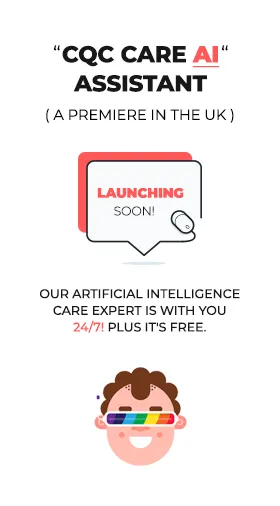Understanding the New CQC Inspection Framework Post-Covid-19
The Care Quality Commission (CQC) stands as a cornerstone in maintaining the high standards of the UK’s health and social care sectors. The unprecedented challenges of the Covid-19 pandemic have led to a pivotal reassessment of Inspection Framework methodologies within the CQC. This has necessitated an evolution towards a more agile and responsive framework, ensuring that care services not only meet but excel in the quality of care they provide.
The Evolution of CQC’s Strategy

In Spring 2021, the CQC introduced a groundbreaking strategy, deeply influenced by the lessons learnt during the pandemic. This significant shift from a one-size-fits-all inspection regime to a more nuanced, risk-based model marks a fundamental change in the CQC’s operational philosophy. The new strategy is designed to identify and swiftly respond to varying levels of risk and service quality, adapting in real-time to the changing landscape of health and social care.
Key Features of the New Framework

At the heart of the new framework are the fundamental questions: Is the service safe, effective, caring, responsive, and well-led? The framework introduces 34 detailed “quality statements” (QS) linked to these key questions, providing a comprehensive guide for service evaluation. These statements are assessed through a diverse array of evidence, including direct feedback from patients and staff, observational data, and an examination of service delivery processes. A notable innovation is the incorporation of a broader spectrum of evidence, offering a more comprehensive perspective on service quality.
Implications for Health and Social Care Services

In this new era, adaptability becomes crucial for care providers. The CQC now operates with a less predictable inspection schedule, based on current performance and emerging risks. Care providers are advised to conduct regular internal audits in line with the QS, ensuring continuous compliance and preparedness. This paradigm shift underscores the importance of constant improvement and quality assurance, moving away from the traditional cycle of preparation for inspections to fostering a culture of continuous excellence.
Practical Example

A case study from a Leeds-based nursing home exemplifies this adaptive approach. The facility embraced proactive measures by integrating QS-focused training into their weekly routines, creating transparent feedback mechanisms with patients and staff, and conducting monthly internal reviews. This strategy not only aligned them with the new CQC framework but also cultivated a culture of ongoing care improvement and a focus on patient-centric services.
Conclusion
The revised CQC framework calls for a dynamic, continuous approach to quality management and regulatory compliance. Health and social care providers, by aligning their operational practices with the new CQC standards, can achieve more than mere regulatory compliance. They are poised to drive substantial improvements in the quality of care, echoing the CQC’s commitment to excellence in the post-Covid-19 era. This is not just a compliance journey; it’s a pathway to elevating the standards of care across the UK.






